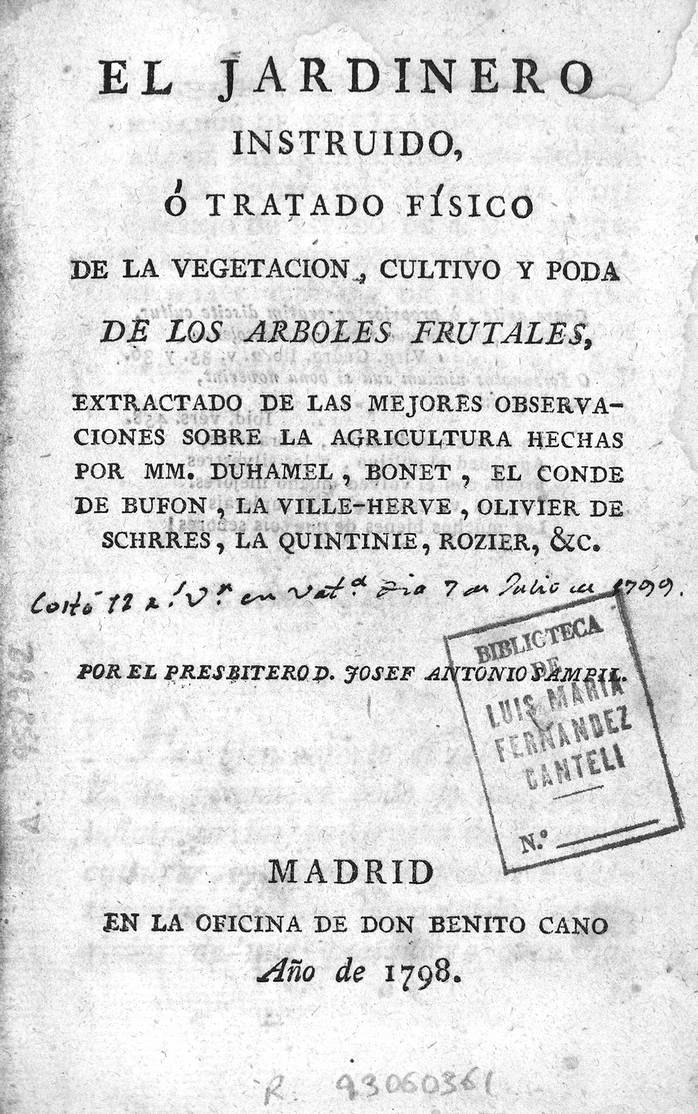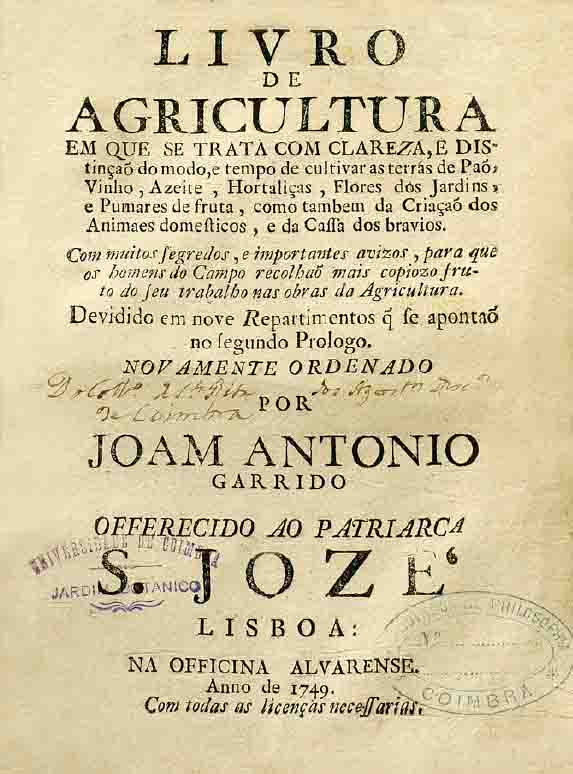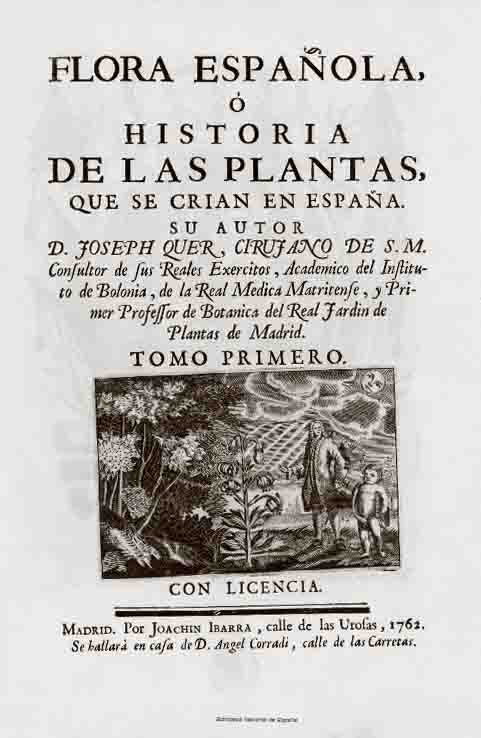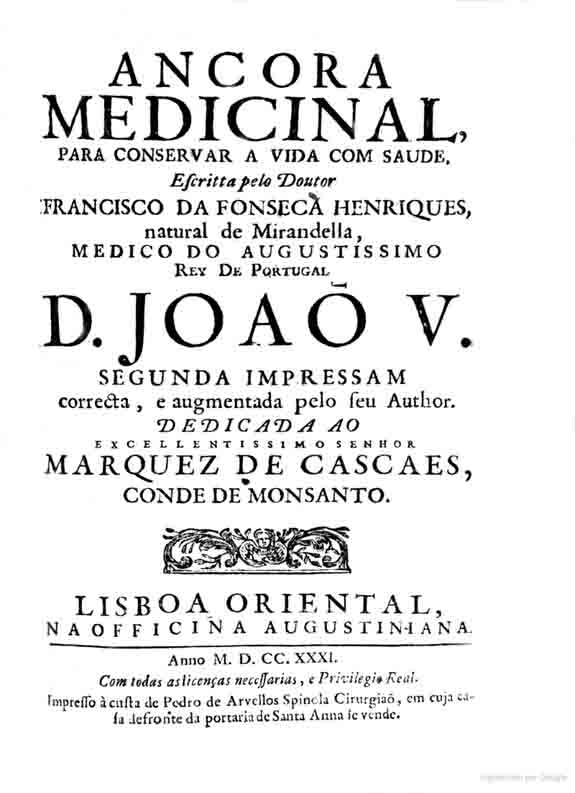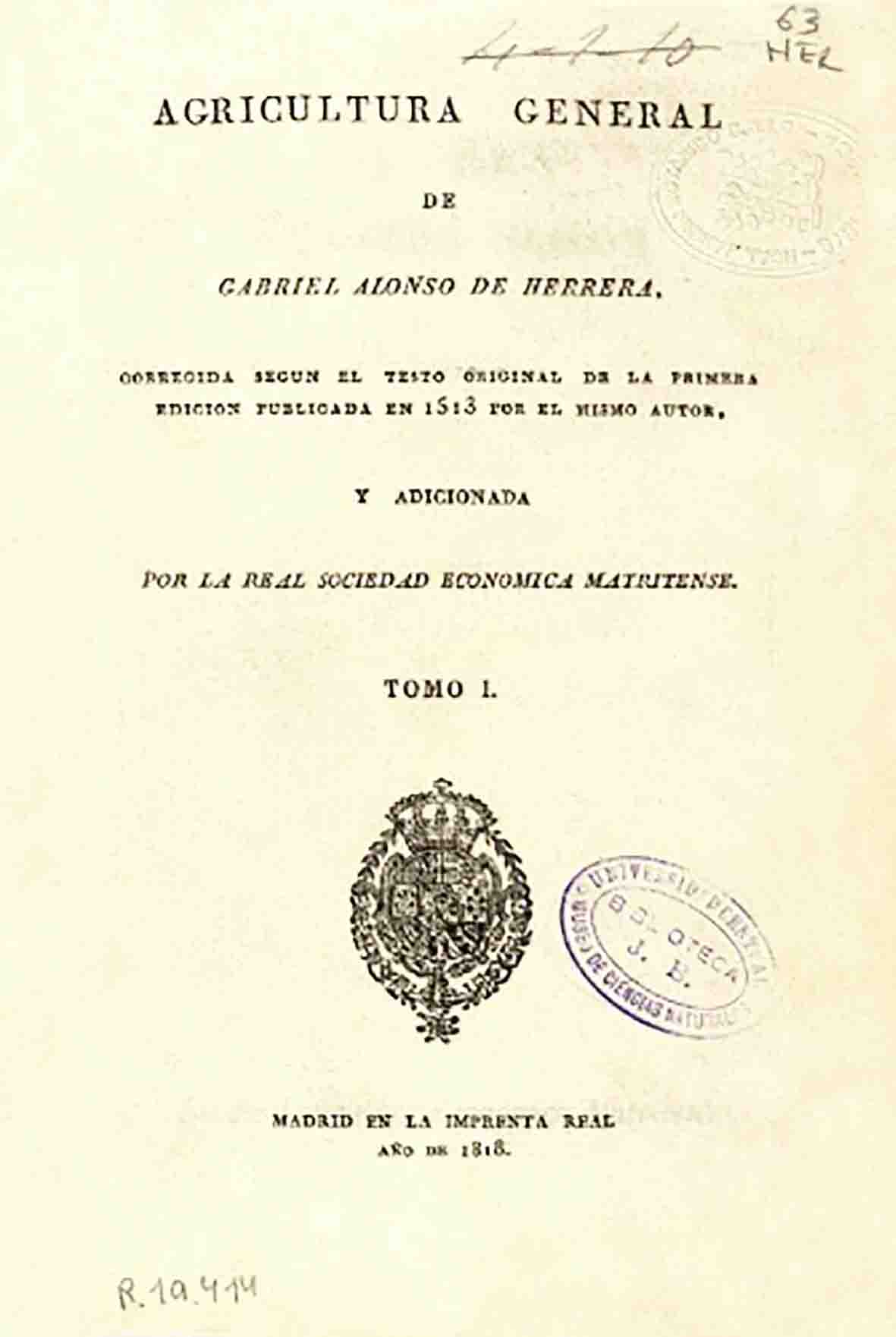El jardinero instruido, ó tratado físico de la vegetación, cultivo y poda de los árboles frutales
Chapters
Pages
José António Sampil Labiades
Editor: Madrid, Oficina de Don Benito Cano
Year of edition: 1798
The exchange of knowledge throughout Europe during the Enlightenment led to the popularization of science and that can be observed with particular emphasis in agriculture. Being an example of that in the Spanish context, El jardinero instruido, ó tratado físico de la vegetación, cultivo y poda de los árboles frutales offers, precisely, an integrated examination of the intersection between technical knowledge and agrarian systems.
As it is written in the first pages, the author’s objective is to “instruct my countrymen in the methodical cultivation of all kinds of fruit trees” but also “to compile everything that was most precious written about the subject”. Indeed, Labiades shows new and old agricultural methods for horticulture and, specifically, for the following fruits: peaches, almonds, apricots, plums, cherries, quinces, pears, apples, pomegranates, oranges, lemons, ciders, currants, figs, and olives.
We can consider that there is a particular interest to explore and examine the various characteristics regarding the cultivation and treatment of plant species like types of leaves and roots, soil conditions, the plant pests and diseases that attacked these crops, grafting and pruning techniques, among others. In sum, the book provides an informative critique of the metamorphosis in the role of the scientific methods in late 18th-century agriculture.
L.P.
more sugestions…
Livro de agricultura em...
João António Garrido
Flora española...
José Quer Martínez
Através dos campos...
José da Silva Picão
Travels in Portugal and...
Heinrich Friedrich Link
Ancora medicinal...
Francisco da Fonseca Henriques
Agricultura general...
Gabriel Alonso de Herrera

